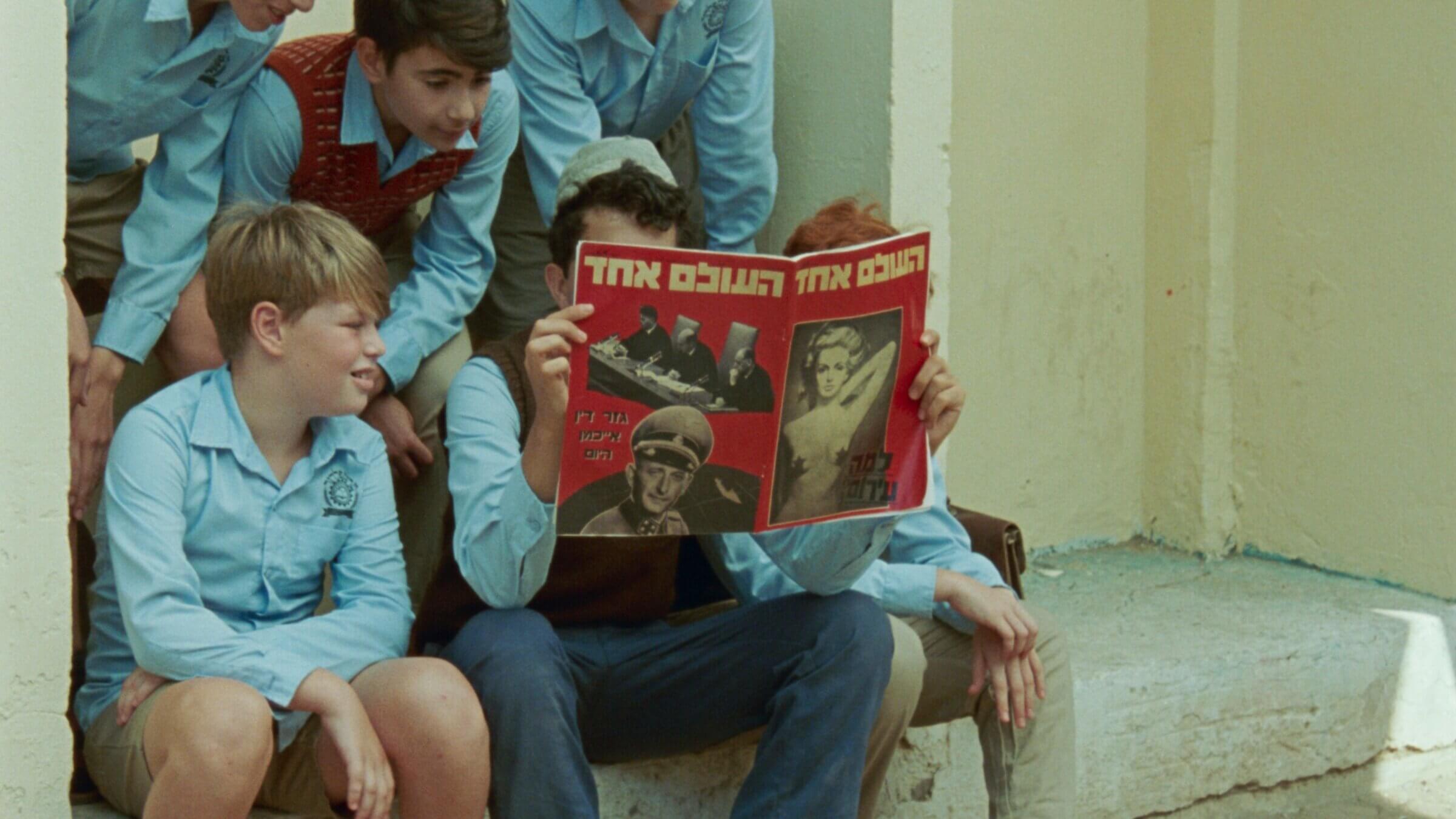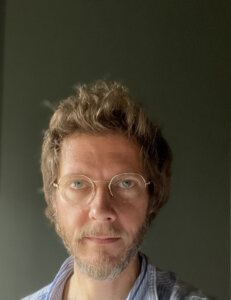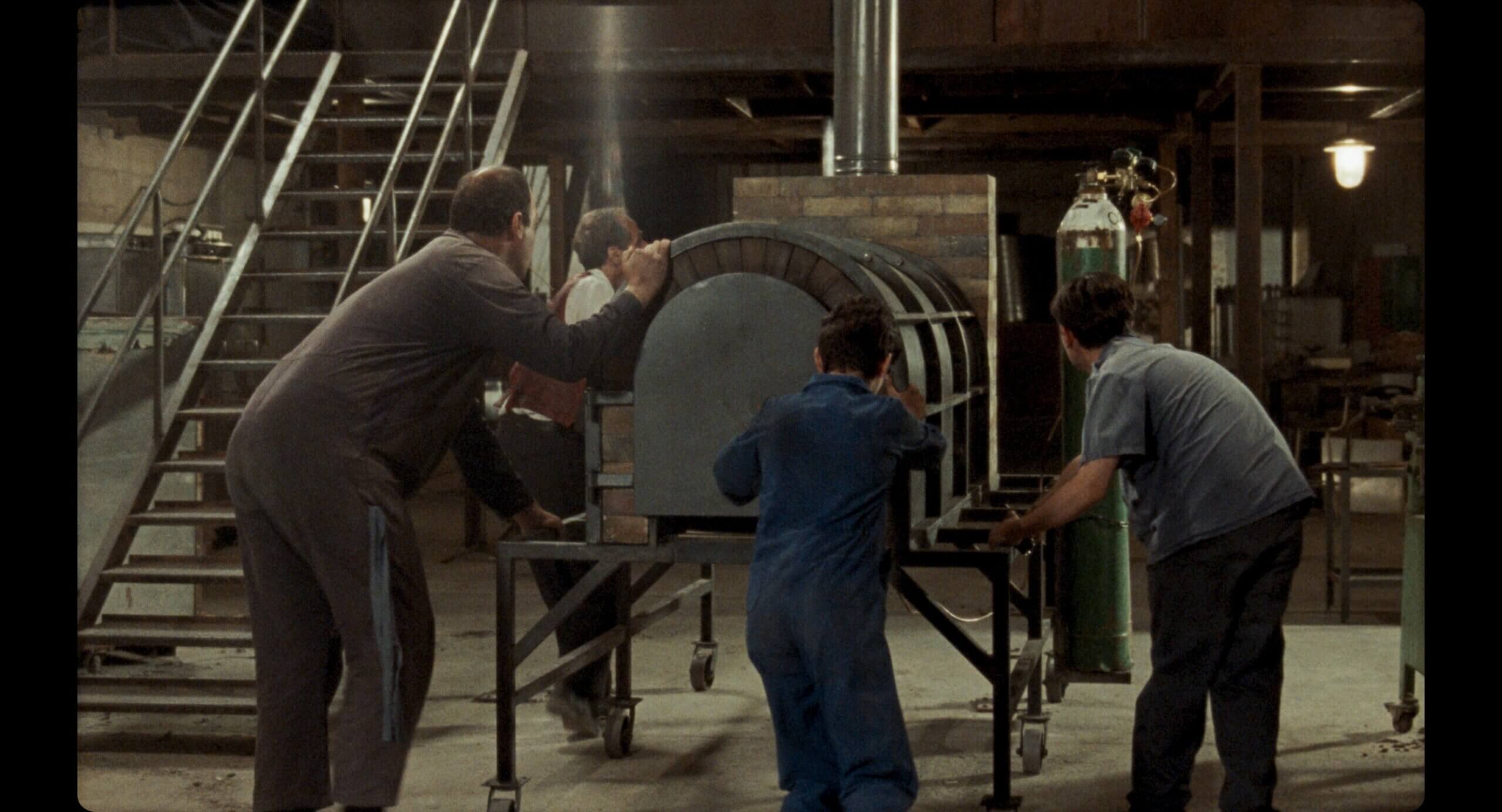Eichmann’s judgment — through the eyes of those who burned his body
Jake Paltrow speaks about his Hebrew-language film ‘June Zero’

Set in the aftermath of the Eichmann trial, June Zero takes a new approach to a familiar story. Courtesy of Cohen Media Group
After Israel hanged Adolf Eichmann, they had a problem: his body.
Not wanting to harbor the mass murderer’s remains, the government had an oven factory manufacture a one-time use furnace to cremate him at a high heat, with his ashes then scattered over the Mediterranean Sea.
The story of the oven — and the people who built it — is the focus of American director Jake Paltrow’s film June Zero, in theaters June 28. Filmed in Israel and in Hebrew, Paltrow and his co-writer Tom Shoval have made a gripping portrait of a young country, ostensibly united by a monumental act of justice, but in reality divided along economic and ethnic lines.
“The trial itself has been very well covered, and certainly his extraction from Argentina,” said Paltrow, director of the science fiction film Young Ones and co-director of the documentary De Palma with Noah Baumbach. Though the 1961 Eichmann trial was televised, and there have been countless books and films about his story since, none of them spend much time, if any, on the oven. So little has been written on it, Paltrow said, that no one knows what became of it after its one incineration.
“We could not get an answer from anybody,” said Paltrow, who made inquiries to the Israeli prison system as to its whereabouts.
Paltrow, who developed an interest in World War II and Jewish history from his father, the late director and producer Bruce Paltrow, doesn’t offer answers with the film. What he does do is consider the everyday people, including an 11-year-old immigrant from Libya. who played an under-examined role in history, all while questioning the difference between sanctifying the memory of the Holocaust and, in the words of one character, “commemorating the crime.”
I spoke with Paltrow about directing in a language he isn’t fluent in, the priest who tried to save Eichmann’s soul and what he hopes the film can convey at a moment when Israel’s war in Gaza dominates the headlines. Our conversation has been edited for length and clarity.
The film almost feels like that Jimmy Breslin story about the man who dug JFK’s grave — an unconventional way into a major story. How did you find this story of the oven and Eichmann?

It’s always hard to remember exactly the steps, but the first one I remember is this detail that no Ashkenazi guards were allowed to work at the prison when Eichmann was there during the trial. And out of that, we found this one-time use crematorium detail. I went on this research trip to find out more about it all. Out of it, we found that there was this, at the time, young boy, an older man, who claimed to work at the oven factory. And it was just totally fascinating that that sort of asserted history was totally contested. There were people there that really asserted that not only did this child not work at this factory, no children ever worked at the factory or were really around.
I felt like, “Well, then I think this is the place from which we should probably be telling this story.” But by going deeper into the sort of personal, telling these stories sort of from subjective points of view. I felt like there was a cultural layer that I couldn’t really penetrate alone. I realized this will be a better movie if I work with a writer from there; that’s how I found Tom Shoval. We formulated this idea of showing this from the workers’ points of view of this event.
The boy who helped with the oven, David, this 11-year-old kid, is a Libyan Jew we hear speak Arabic with his father. There is a guard who is a Moroccan Jew. The head of the factory was a member of the Haganah who was especially violent — had a reputation for killing Arabs. Was that all based on the actual people who were involved?
It comes out of who these people actually are and what their backgrounds are. Even for the Jewish community at large, outside of Israel, people often don’t understand the sort of vast spectrum of diversity within Jewishness. We were intentionally trying to show it. Just by telling the story you’re seeing all the facets inside of Israel at that time. What you see inside of it is a lot of conflict and a place that’s very young, trying to figure out its own identity.
The family of the person that David is based on was, in fact, from Iran. But the Libyan part of the story is something really not even known all that well in Israel, let alone in America, which is this part of the Mizrahim, which are touched by the Holocaust itself, and the fact that these [Libyans] are sent to concentration camps. And it’s thousands of them. Yes, far fewer are killed, but it’s still a major part of the history, and it’s quite underreported, and so as that applies to a young boy who’s also facing some of these sort of cultural bigotries and racism in the country at the time, I thought it speaks to something that people don’t know all that much about.
It’s coming out in a different time now for Israel and for the world than when you made it or screened it at festivals. What are you thinking about now that you’re releasing this into a very different situation, even than a year ago?
I think what it speaks to is that it’s hard to make peace with the neighbors when there’s no peace in the house. You’re seeing, in this very small and new country, the conflicts that are brewing. Whether it’s with a third-generation Lithuanian Jew running an oven factory, or fighting with a first-generation or second-generation person from Yemen, what you start to see is the fabric of a place. So my hope is that audiences outside of Israel, who maybe have less of a relationship with some of these histories, or even knowledge of them at all, see this story from a place that’s very complex in and of itself.
The conviction and execution of Eichmann was a major turn in 20th-century history. But as it applies to the characters and the way that we present them, they’re dealing with their own personal dilemmas. And I think it’s very easy right now, especially when you look at the war right now, it seems like the mandate almost is to draw yourself to one side or the other, and there’s sort of nothing in between. My hope is that maybe people who wouldn’t want to see anything to do with this, or even go as far as wanting to boycott something like it, they should see that there are points of view within this that they may even connect with and see something a little bit different.
Tom Shoval is Israeli, and obviously knows Hebrew, but what was it like for you to direct this in Israel not really speaking the language?
I can read [Hebrew] better than I can write. My vocabulary is fairly extensive, but I can’t really converse in it. I can prepare a sentence, you know, getting a cup of coffee, but in the process of rehearsing it, it becomes sort of programmed. The actors are saying the same words over and over again. You’ve written them. By the time you’re actually filming, I was in touch with whatever they were saying. Also the entire crew is Israeli, and I’m saying to them, “Let me know if something isn’t working here that I’m missing.”
There’s a powerful moment, when we cut away from Israel and we’re in Poland and Americans are hearing survivor testimony. We have this character who, I believe, is inspired by Michael Goldman-Gilad, who was an investigative officer in the Eichmann trial, and he was identified, in a famous part of the trial, how he was a victim described in testimony. In the movie the camera glides through the empty space where he was whipped by Nazis, as he describes it. Where does that come from?
It comes from the conversations Tom and I are having about exploring this. The movie, in and of itself, is dealing with a kind of provocative subject matter. So there’s this balance in doing it, which is, there’s no reason to be afraid of it being provocative, and where is the line between being provocative and sort of offensive? And so that becomes sort of an intuitive thing. The movie is dedicated to Claude Lanzmann. He’s making these documentaries in the ’70s, and you watch them today, and they still feel so new and so radical and so provocative, whether it’s Pourquoi Israel or Shoah. We felt like, Are there ways to employ some of these techniques that he’s using in nonfiction film?
We developed the “ghost camera” idea, the character Micha Aronson, based on Miki Goldman, telling Miki’s story exactly as it happened, with the camera following nobody. We’re actively saying, like what Lanzmann does, we will use no archival and no recreation. We’re not going to reenact any of the atrocities. We’re going to sort of do it through testimony, and do it through these characters.
I’d love to ask you about filming on 16 millimeter and the look that you were trying to cultivate.
When I was young, I was quite obsessed with some of the technical and technological parts of movie-making. Finally, right as I’m starting to understand how I want my movies to look, in terms of the way they’ll be exposed and processed, and that sort of thing, digital starts to take over. So it’s something that I’ve held on to, just as a tool. It’s something that I know how to do, and I’m very comfortable with it. I haven’t filmed on digital. I don’t really know it so well, and so for me it’s less about trying to get a vintage look and more about trying to meet the emotional nature of the story I’m telling, and how the medium itself will help amplify those ambitions. And that’s really what the shooting on film is about.
On a lower budget, it really can help integrate materials. So whether that’s clothes that would have been made out of wool at the time, that are now made out of polyester, they don’t glisten, and the prison bars feel like they are sort of stuck to the wall, the film sort of hugs elements like this.
You shoot around Eichmann. We never really get a full shot of him. Was there a version of this where he wasn’t even in it? Finding the right amount seems like an interesting exercise.
I didn’t want to make him a character. I didn’t think it was interesting. There’s so much speculation about him. The treatment of characters like this in general often starts to be presented in a bit of a Hannibal Lecter, hyper-diabolical thing, and so what starts to happen is it overrates and underrates the reality of somebody who’s actually capable of the crimes that he participated in. Even if we could psychoanalyze and understand them, where is that going to get us now? After millions and millions of people have been killed, will we understand that this is something that’s inside of human beings, the capabilities unlocked in lots of ways? But when you call these people lunatics and animals, it further distances the fact that this is something that human beings are capable of.

There’s an amazing book that somebody else should make. There was this reverend who was granted these visitations with him before the execution, Reverend William Hull. His wife spoke German. He was a Protestant reverend who was going to try to save his soul. And I think he had 12 or 13 visits with Eichmann where he’s trying to get him to accept Jesus, so he won’t go to hell.
He’s there during the execution. And I think by the end, he’s given up on him doing any sort of formal recognition. And he’s just whispering to Eichmann, right before they hang him, “Just say ‘Jesus. Jesus.’ Just say the word,” and he won’t do it.
The scale of his crimes are what everybody [in the film] is reacting to. And out of it, this person who popularizes or invents or invigorates modern dehumanization, the process of keeping him alive before he’s executed kind of rehumanizes him. The guard checking his breath like you would a baby in their crib. The careful sweeping up of ashes. These all exist in a very human realm.














